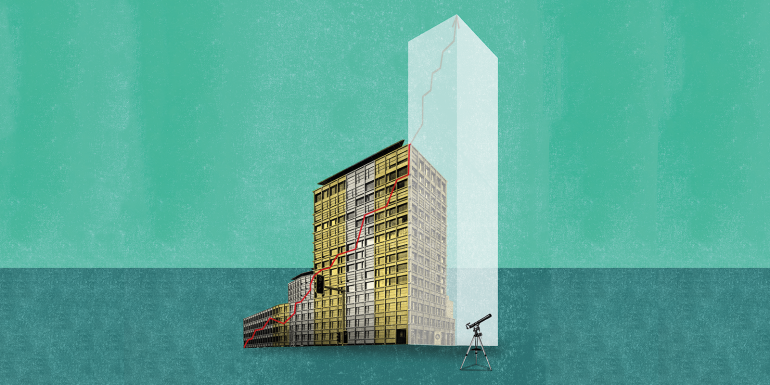Retrofitting: the need for speed

Research from property investment firm JLL finds that retrofitting rates need to triple to meet the goals in the Paris Agreement
JLL’s Retrofitting Buildings to be Future-Fit research reveals that rising energy costs are expediting the move towards more efficient buildings. Moreover, net-zero carbon (NZC) intervention measures directly impact a building’s bottom line, and failing to decarbonise leads to significant financial risk. For many buildings, meeting the 2050 decarbonisation targets of the Paris Agreement is grounded in retrofitting current spaces, which can also garner higher rents, reduce financial risk, generate higher occupancy rates and raise tenant satisfaction. In essence, retrofitting buildings is essential to reduce energy costs and combat the global energy crisis.
“Retrofitting existing buildings is the quickest and most cost-effective way to accelerate decarbonisation in the built environment,” says Guy Grainger, JLL Global Head of Sustainability Services and ESG. “With increasing corporate commitments around net zero, tenants are more selective when deciding what space to occupy. Currently, 60% of Fortune 500 companies have some climate or energy targets and are seeking to occupy spaces that will help them reach their goals.”
JLL’s research reveals that in the global north, retrofitting rates need to triple from barely 1% today to at least 3% of existing buildings per year to meet decarbonisation targets. To hit these targets, an estimated $3trn will be required in the office sector alone. In the developing world, new commercial and residential real estate will need fresh approaches, prioritising carbon and energy efficiency to improve resilience to climate change and contribute to a more sustainable future. Addressing the knowledge gap, upskilling the workforce and scaling technology will be critical to accelerating the pace of retrofitting.
Short- and long-term goals
“Retrofitting does not need to be an all-at-once endeavour. There are quick critical actions that can be undertaken against the backdrop of a long-term strategic approach,” says Grainger. “Decarbonising is complex and, when retrofitting current spaces to achieve this, owners need to take a holistic view for it to be successful. Retrofits are both more viable and responsible when considered in tandem with broader asset repositioning that responds to changing workplace dynamics, social impact and climate resilience.”
Retrofitting buildings to be more energy efficient will also require owners and occupiers to form new business models to gain the significant value they both have when investing in sustainability. The alignment of stakeholders extends beyond just the landlord and tenant, as suppliers, building operators, management teams, on-site teams and even local governments must work together to transition to a low-carbon economy. There is an urgent need for a consistent retrofitting approach – and businesses that ignore this do so at their own financial peril.
Download the Retrofitting Buildings to be Future-Fit report at bit.ly/ei_retrofitting









